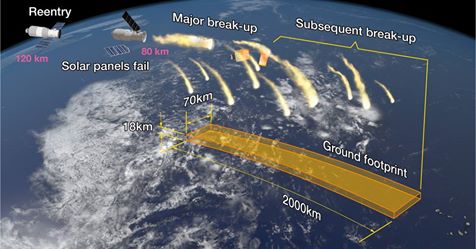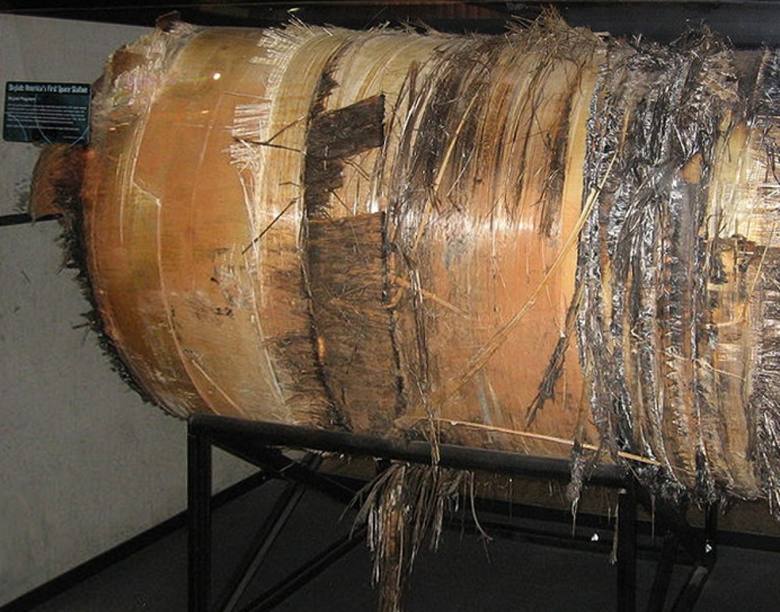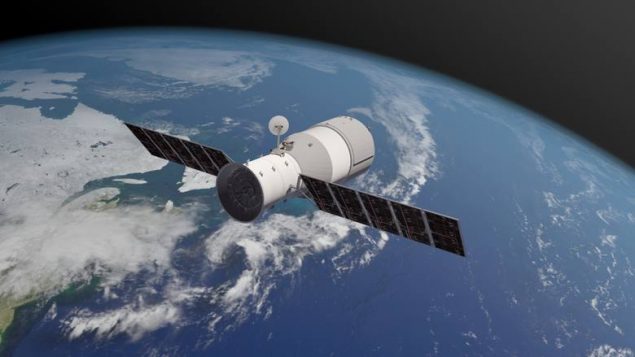Chinese space station Tiangong-1 is beginning its descent into the earth’s atmosphere.
According to Stjin Lemmens, of the European Space Agency’s Space Debris Office, they are predicting that Tiangong-1 will re-enter Earth’s atmosphere between March 31 and April 2, somewhere between 43 degrees north latitude and 43 degrees south. So only a section of southern Ontario is within the predicted area, leaving the rest of Canada out of range.

National Geographic.com
In an interview this morning with CBC Radio, Montreal-based science writer, Andrew Fazekas said, “It’s about 200 kilometres above our heads now at the outermost edge of the earth’s atmosphere; in the next couple of days it will be about 70 kilometres above our planet, at that point is when it starts tumbling uncontrollably and starting to burn up.”
He says most of us don’t have much to worry about, as “70 per cent of our planet is covered in water”, so chances are it will come down into an ocean, or a remote area of land” and even that likelihood is relatively remote as most of it is expected to burn up in the descent through the earth’s atmosphere, but the truth is no one really knows.
“Get a grasp on the science of re-entries”
Tiangong-1, China’s first space station, about the size of a school bus, was launched in 2011. As a station it was only visited twice by Chinese astronauts.
Then in 2016, the Chinese space agency announced it was no longer tracking the 12-metre by 3.3-metre eight-tonne station.
Other organisations continued tracking it, and they know now, it is fast approaching.
Fazekas says they’ve done the number-crunching: “the aerospace industry experts have been looking at the trajectory this week of it, and looking at how it’s coming down, the gravitational pull of the earth, how it’s pulling it down into the atmosphere, the drag of the atmosphere, the friction of it” but that’s all.
The good news is that the odds of any one of us getting hit by some of this space junk, are “one in a trillion”, compared to the one in a million chance of being struck by lightening.
Fazekas says, however, this is still a very serious challenge.
“What I’m hearing from experts regarding this, is that they’re thinking perhaps this Chinese space station incident is going to be a motivation for government agencies, worldwide, to really provide the funding to researchers to get a grasp on the science of re-entries; that’s the starting point.”

This fragment from the U.S. Skylab, part of an oxygen tank, fell to the ground in Australia’s outback. Photo taken at the U.S. Space and Rocket Center in Huntsville, Ala. (Wikimedia Commons)
The unknowns are somewhat astounding.
“We just don’t know exactly where and when this thing is coming down and that’s because we just don’t know enough about how the atmosphere is going to play into this”, he says.
“We don’t have enough physics and global monitoring of the atmosphere of the earth to understand exactly how a tumbling multi-tonne object will behave when it enters the atmosphere, and that’s what’s leaving people scratching their heads going ‘Well, where exactly can we expect this thing to fall?”
Fazekas says it will most likely completely expire with no fragments landing on the ground but he acknowledges “the lack of predictability”.
Somewhere people may see something burning up at high altitudes he says, but this is a challenge that is not over.
Fazekas says it’s going to repeat itself and the risks are going to go up as well as we have a growing number of orbiting objects around the earth.
According to the space law that’s been developed so far, if and when any damage does occur as the result of space junk landing, the country of origin is legally responsible.
But the increasing privatisation of space travel will bring new jurisprudence.
Keep watching.
(With files from CBC)







For reasons beyond our control, and for an undetermined period of time, our comment section is now closed. However, our social networks remain open to your contributions.